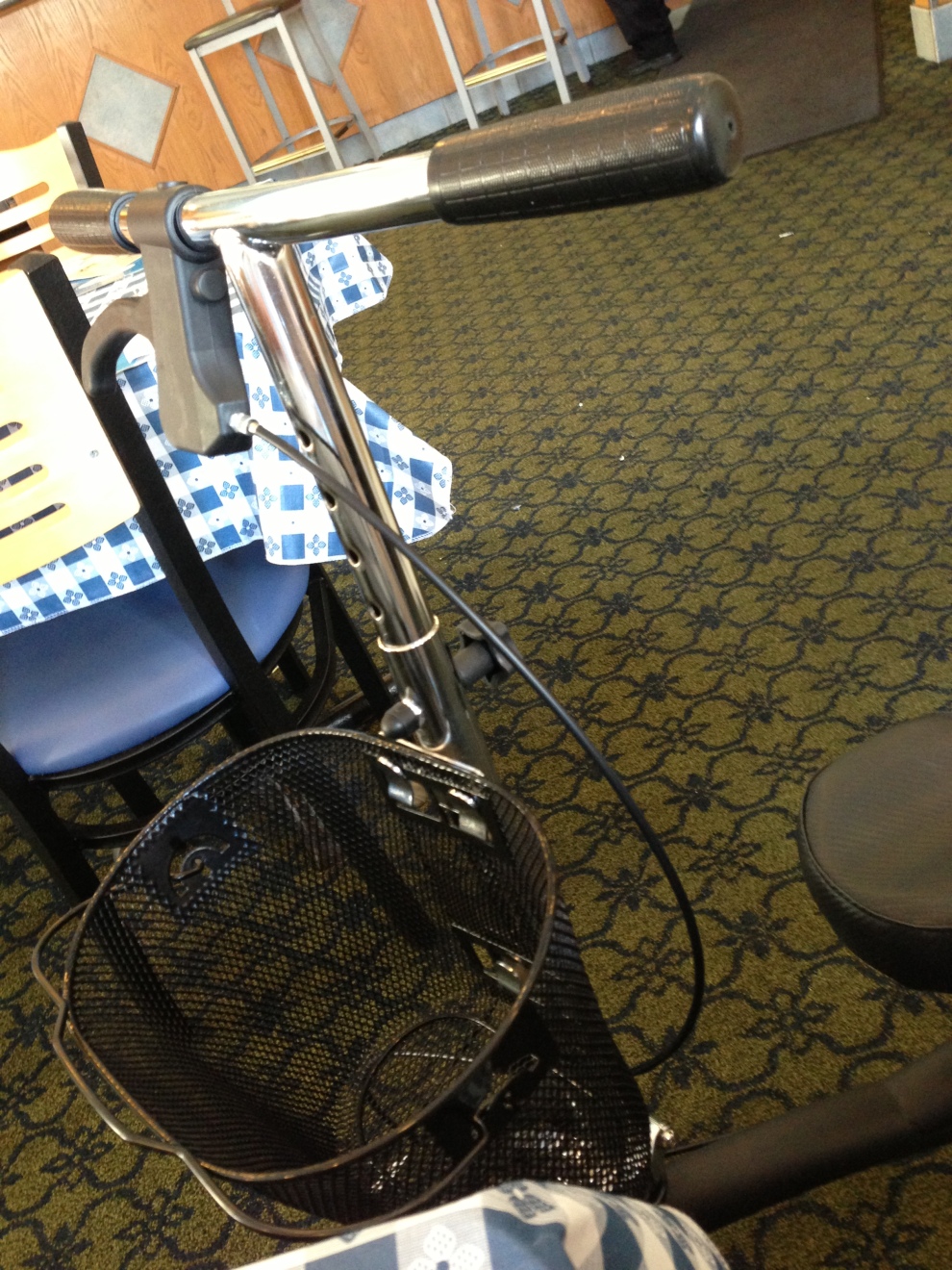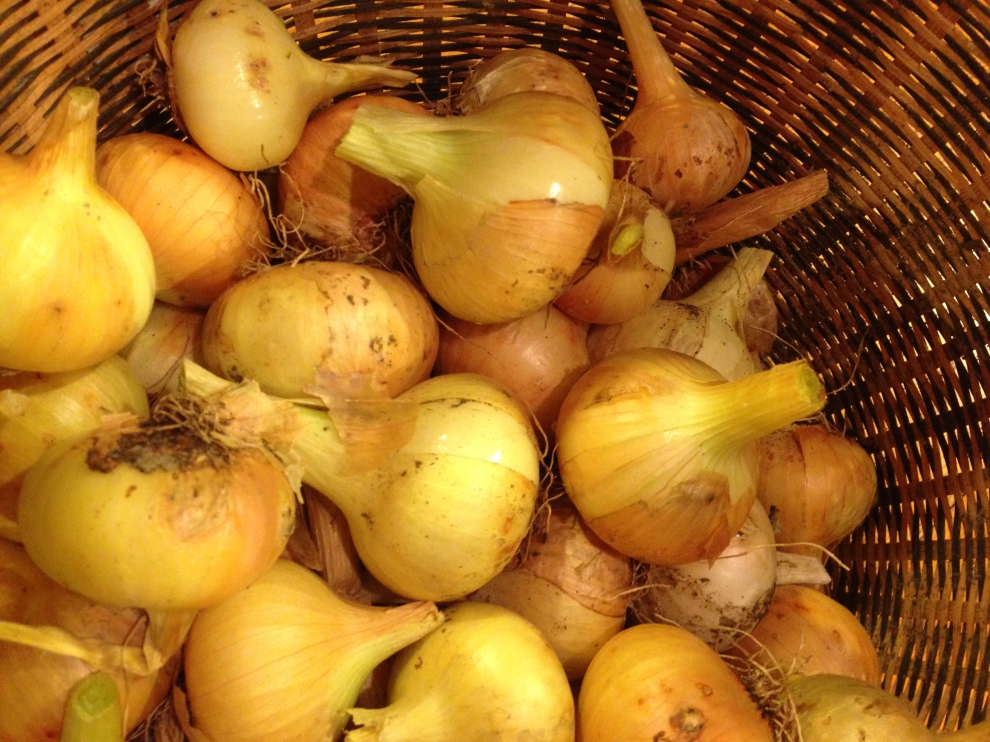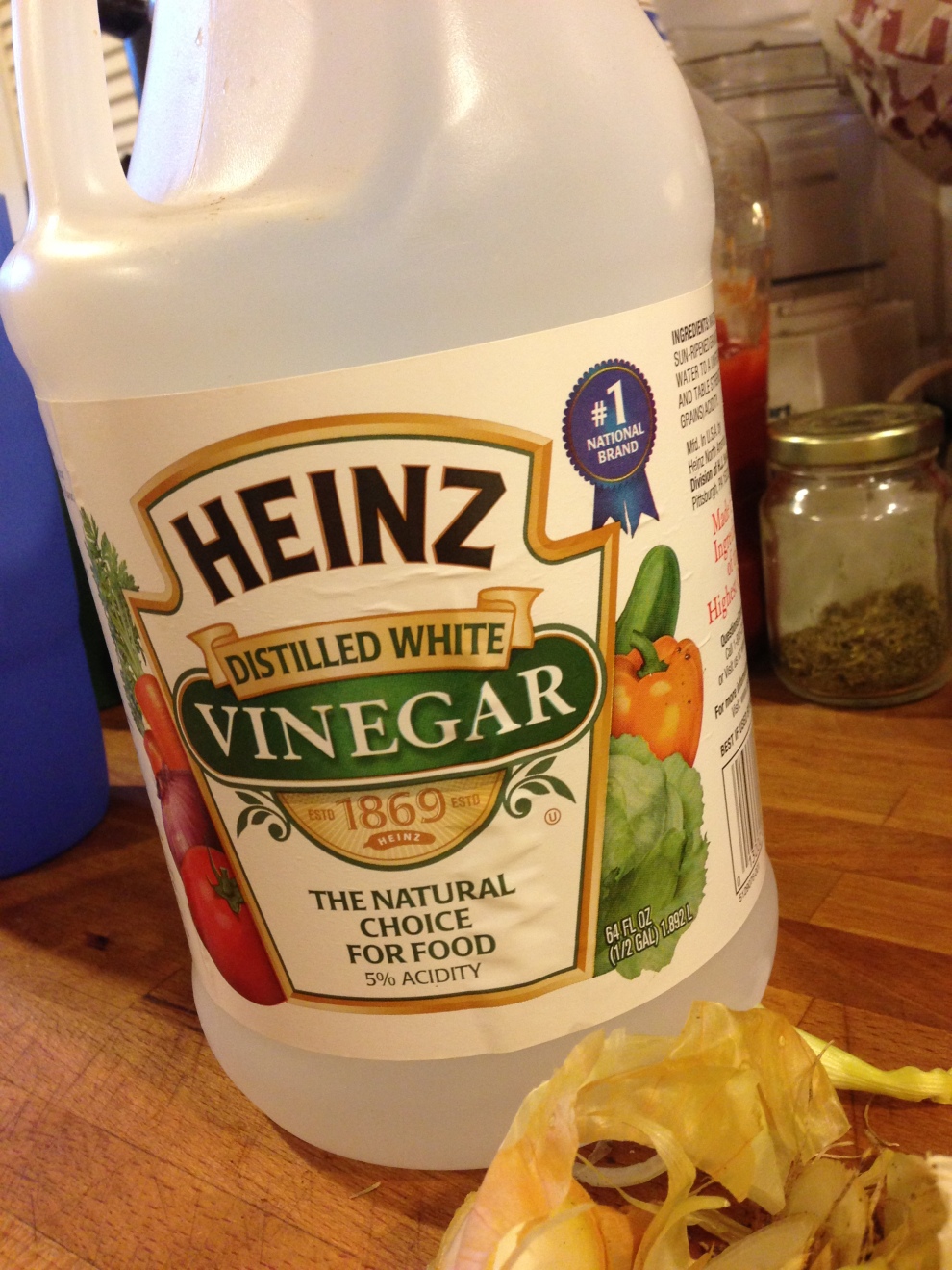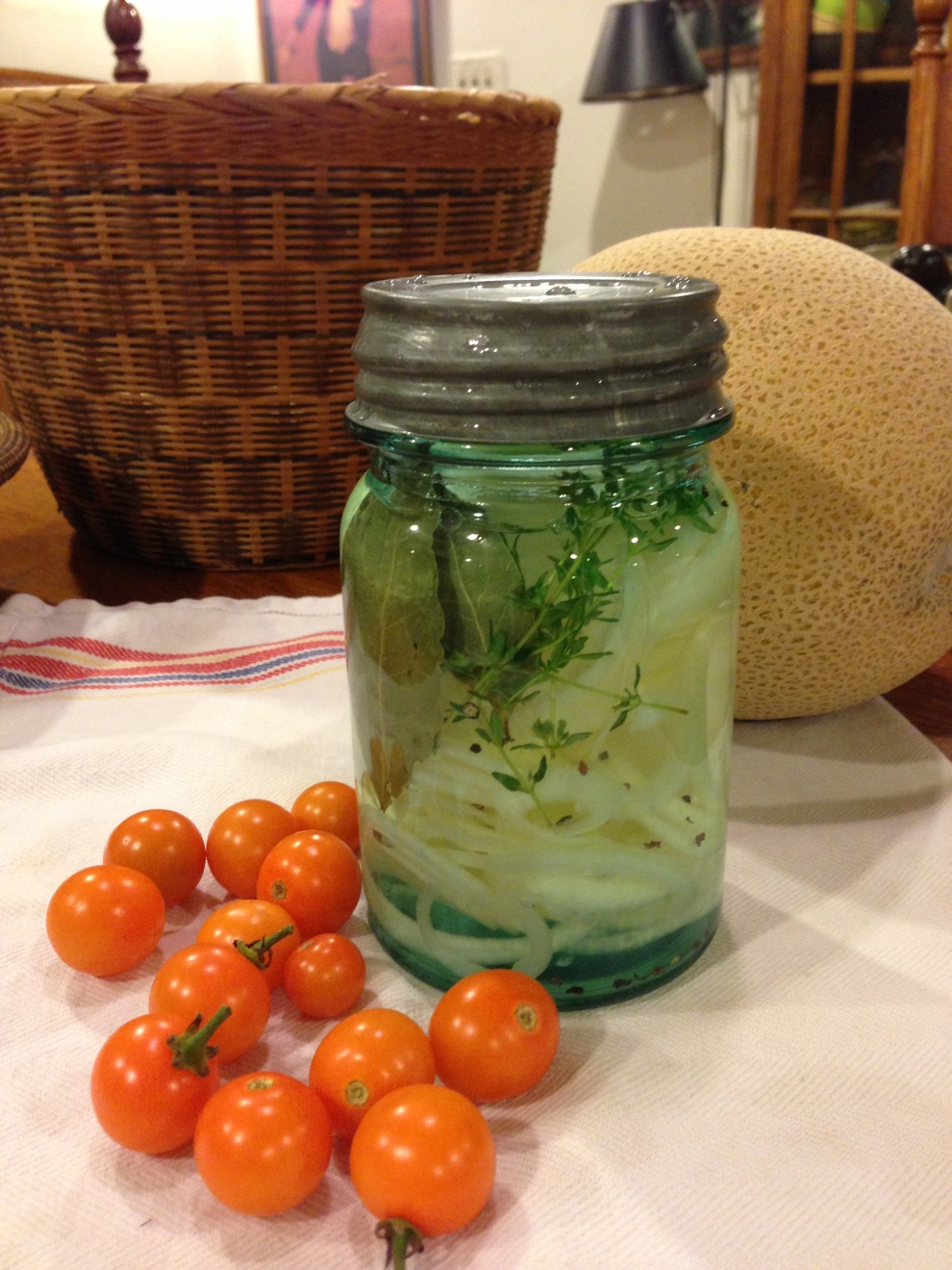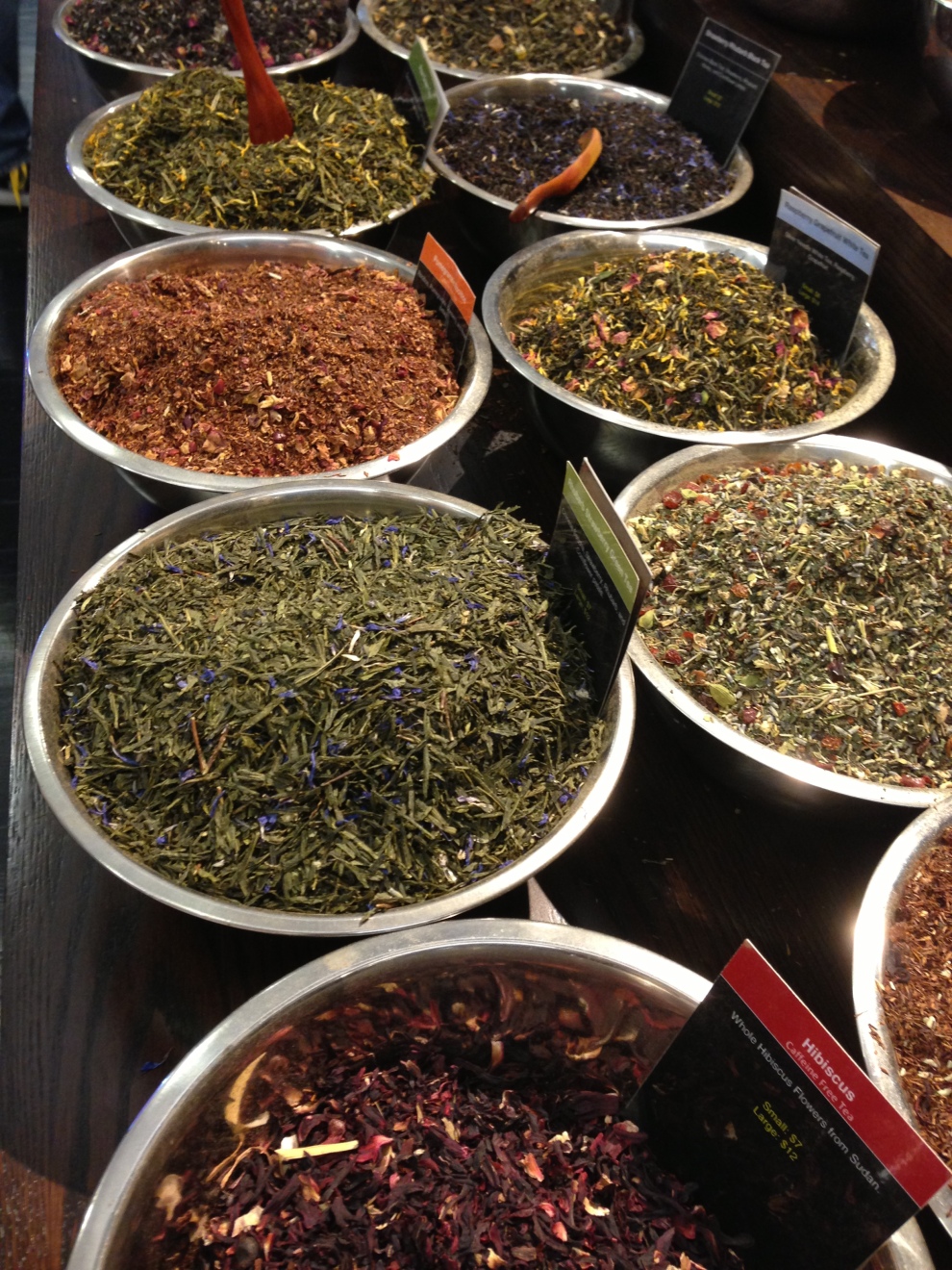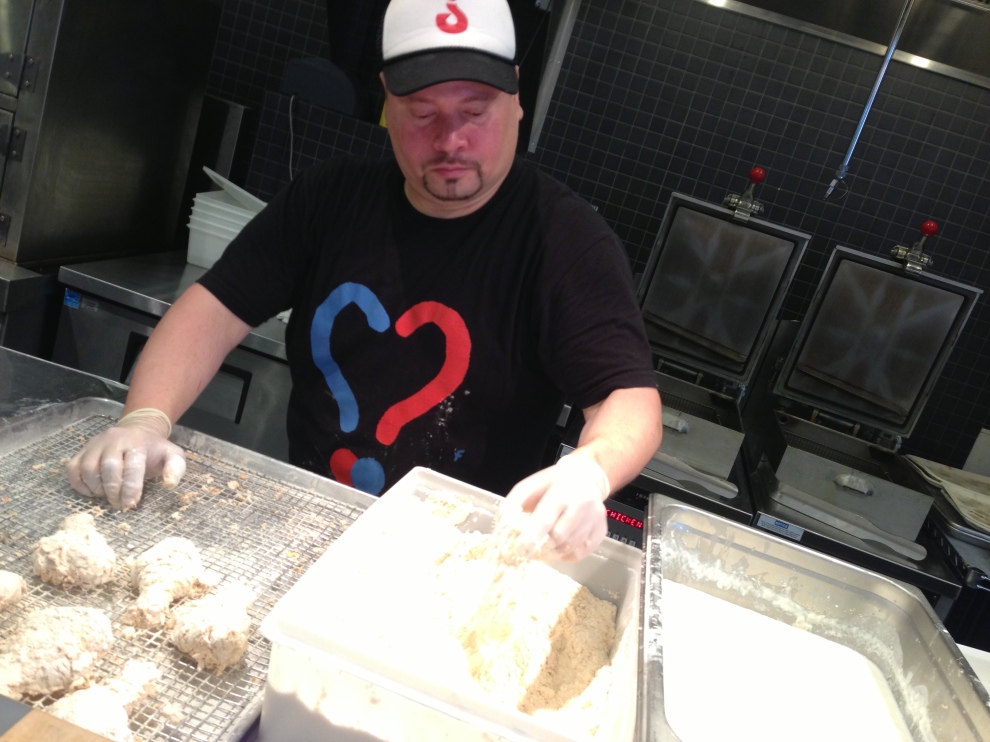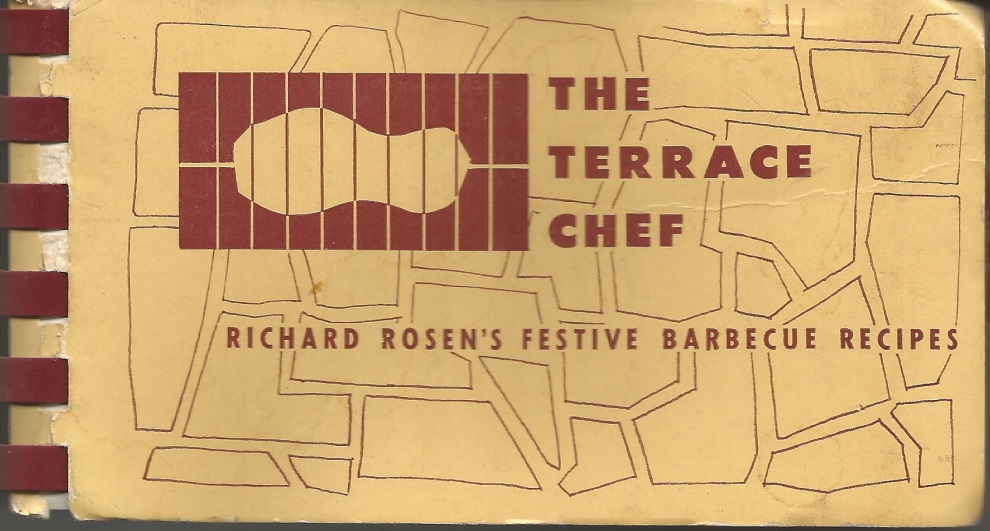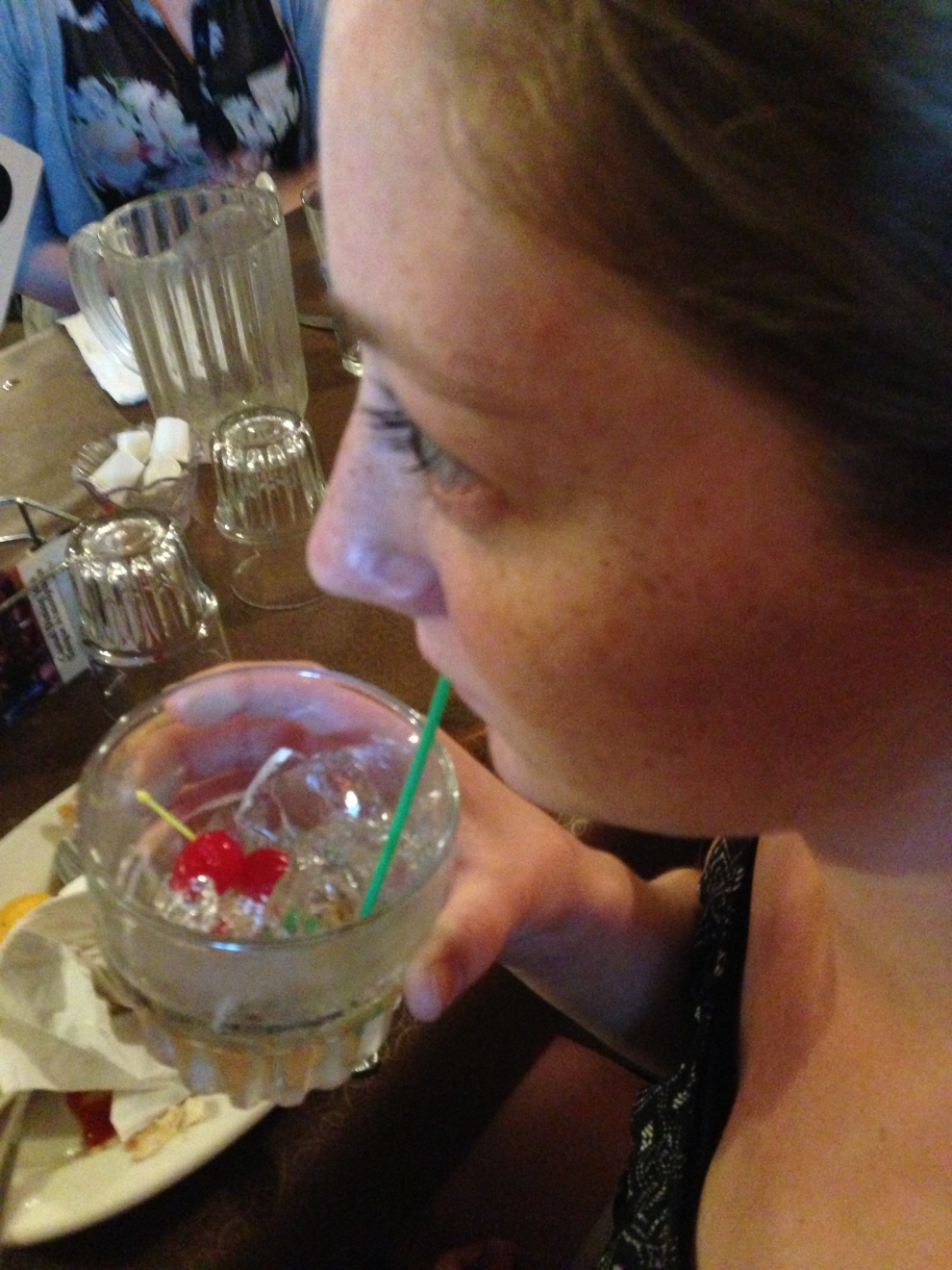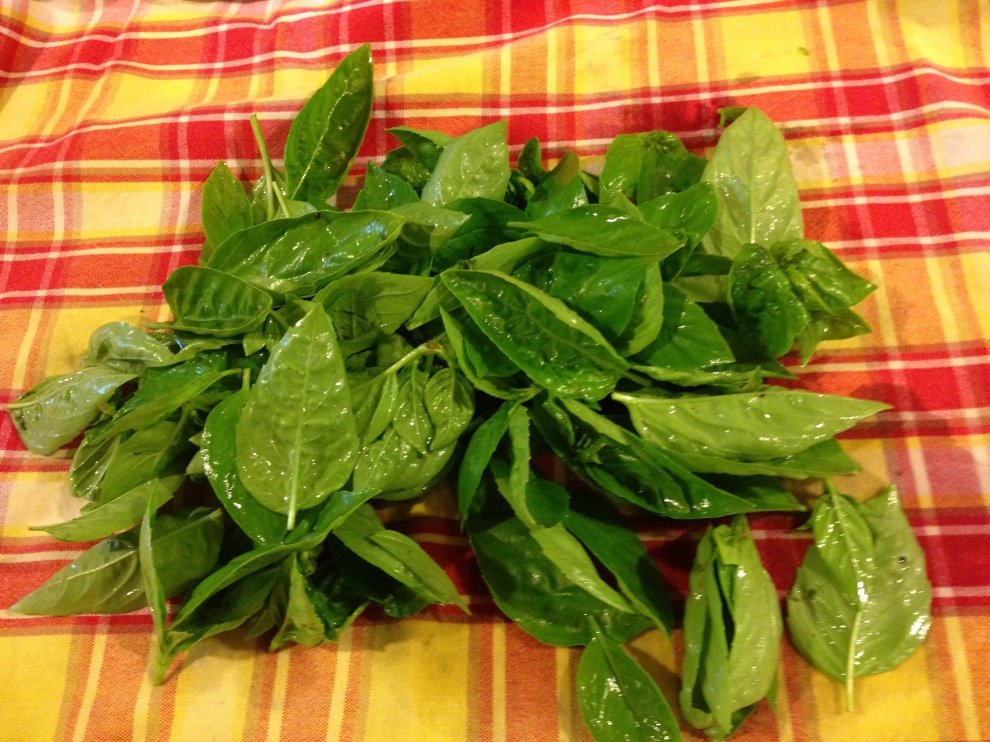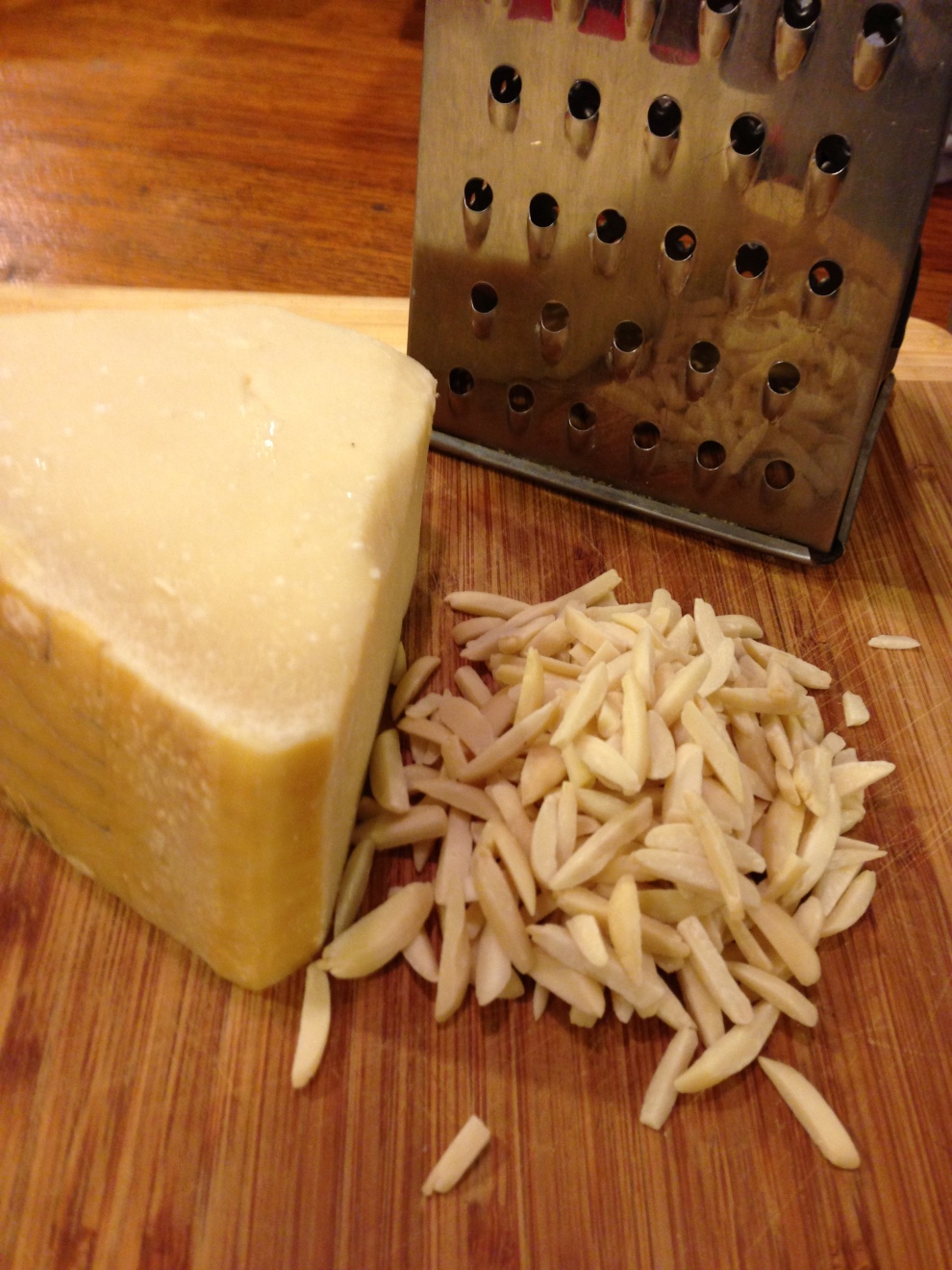At the movies I saw a woman on crutches. A young, pretty woman in a color-block sundress. As I watched, she hopped around the serve-yourself beverage kiosk, assembling her ice, her soda and her straw, putting the whole drink together before her boyfriend politely carried it away for her.
I saw her next swinging her way into the ladies’ room. Into a regular stall! Not the one with the wheelchair icon I was struggling to enter with my kneeling scooter The Bloke. I washed my hands, she washed her hands, the difference being that she was cool as a cuke, graceful and weightless, not perspiring and puffing like me. Probably about 24 years old.
At the film line she was waiting, as was I, to go in. We shared war stories. A motorcyle accident, she said.
A little piece of the bike flew off into her ankle. The doctor had her in her cast for six weeks. It was a little difficult, she told me, because she lives up four floors and the laundry’s in the basement. But she’s making do okay. Her bike? Came out of the accident perfectly fine. She couldn’t wait to get back on it.
By the next morning my conversation with motorcycle girl had begun to percolate. I had been proud of myself for managing The Bloke so well. But now I had crutches envy. How do you make the best of this particular situation, a bum foot, and do it with some measure of equanimity and grace? It helps if you are an athletically gifted person of 24, of course. I wondered, how do you take your lumps and move forward, albeit with a cast on your foot that feels like a stiff leather ice skate with no sock? A little sand drizzled in for good measure.
Recently I asked my brother Peter for blog ideas since I knew I’d be less able than usual to go on gallivants and cover eclectic cultural happenings like I usually do. Why don’t you just catalogue all the stuff in your house, he suggested.
I feel, though, that I have already catalogued some of the things I like best. My vintage cookbook-pamphlet collection, for example.
The heirloom lace created by my foremothers.
I don’t know that I’ve ever indexed the bones that have surfaced from the marsh in front of the Cabin, mainly carried helpfully to us in Oliver’s mouth. We joke that he is trying to assemble to assemble a full deer skeleton.
Or the skins that have been sloughed off by so many snakes just to the south of the house.
But, like motorcycle girl, probably I do get to a few things every day, even now, move my constrained life ahead bit by bit. Take some action, even if I’m not swinging effortlessly on my axilla mobility aids. Thus, a catalogue of 10 actions taken today.
1. A shower bath, my leg encased in a plastic bag, with streaming hot water and a worn-down bar of soap a revelation.
2. A knitted row of angora, hopefully without a slipped stitch.
3. Perused some passages in Travels in North America, a volume published by Swedish naturalist Peter Kalm in the 1760s. In it he expounds on such scientific matters as the way bears kill livestock in Philadelphia: by biting a hole in a cow’s hide and inflating it until it dies.
4. Stumbled upon a recipe for Warm, Cheesy Swiss Chard and Roasted Garlic Dip. As soon as I’m up and around the kitchen again!
5. Checked out the Thanksgiving episode of Orange Is the New Black.
How many programs have a cast that is 99 percent female, let along with a heavy lesbian slant? Mindblowing.
6. Pushed The Bloke to the sushi bar at the back of a Japanese restaurant and had the treat of watching the chef halve a bright pink, yard-long salmon with finesse, season it with rock salt and layer it in a tub with its perfect filet brothers.
7. Scootered through a supermarket I usually despise as being too plastic but which today looked cheerily kaleidoscopic after two weeks of grocery deprivation.
8. Brought home the beer in The Bloke’s handy basket.
9. Visited my garden for the first time since the surgery. The collards were begging for a simmer with a pork hock.
10. Visited with Oliver on his turf, the front yard, for a change, rather than him visiting with me on the couch.
I’m getting back onto that couch now and elevating my aching foot. Ahhhh. But… I wonder what motorcycle girl is up to. On her anime-sparkle-titanium-neon crutches. Rocking the lead vocals with her hip hop crew? Bottle-feeding a new litter of rottweiler-lab pups? Baking a dozen loaves of vegan meatloaf for her closest friends? Or just getting ready to fly down those four flights and go out to the movies again? Because she can do just about anything she wants. As can I.




















